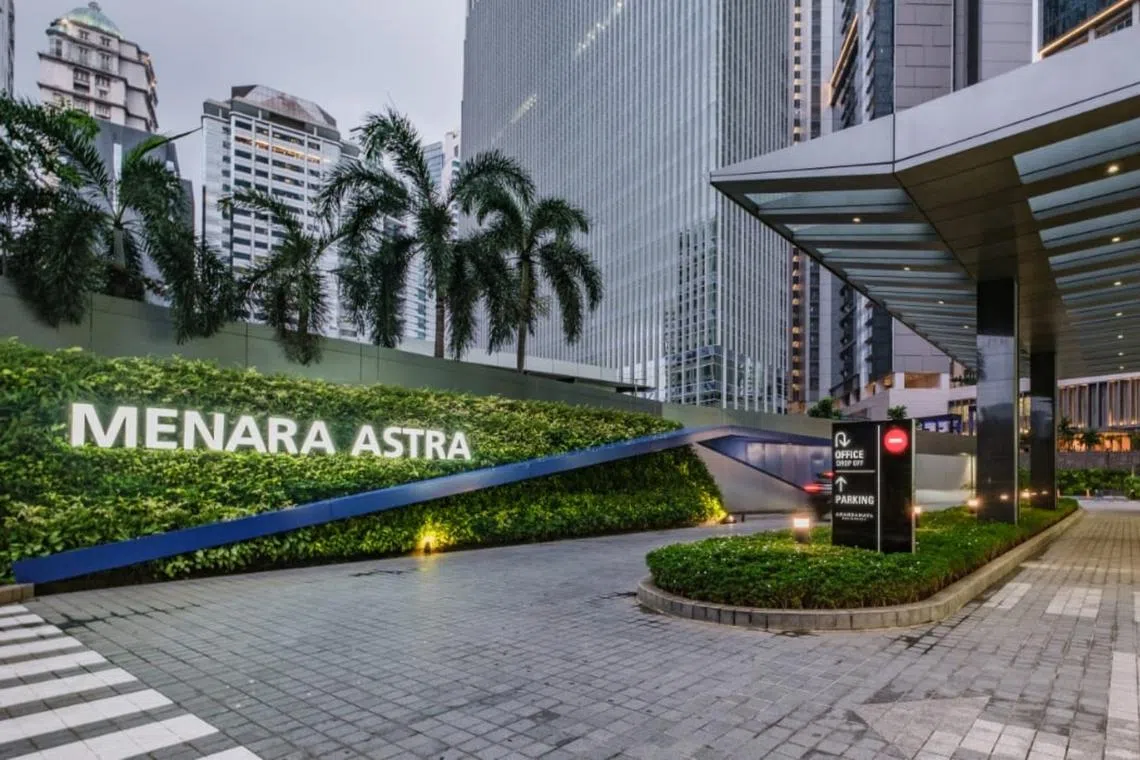A skyscraper in Jakarta offers lessons for quake-prone Indonesia
Sign up now: Get insights on Asia's fast-moving developments

51-storey skyscraper Menara Astra has a belt-truss system that reduces vibration and displacement in the building.
PHOTO: MENARA-ASTRA.CO.ID
Follow topic:
JAKARTA - When a 5.6 magnitude earthquake hit Indonesia’s West Java province
They continued working as per usual in their offices in a 51-storey skyscraper called Menara Astra in the centre of Indonesia’s capital.
The building, which contains offices, car showrooms, a museum and shops, was the first development in the whole country to use the belt-truss system long adopted by other quake-prone countries like Japan and the United States.
The belt-truss system involves linking the core walls and perimeter frames to reduce vibration and displacement in the building, said Jakarta-based Leonardi Kawidjaja at global design and engineering firm Arup Group.
The building also has so-called “refuge floors”, where workers can take shelter in extreme disaster situations. Since the belt-truss system is located in the refuge floors, they received additional protection.
Having that system in place allowed Menara Astra to withstand a once in 500 years seismic event, said Mr Kawidjaja, who was the structure engineering team leader for building’s construction.
For Indonesia, which sits along the Pacific Ocean’s “Ring of Fire” zone, Menara Astra offers a blueprint for how its cities can better prepare for future disasters. Another massive mixed-use development called Thamrin 9, located a 20min car ride away from Menara Astra, has also adopted the same approach in its construction.
The Arup Group is also installing what is known as an outrigger system in two other mixed-used high-rises under construction that also helps quake-proof buildings.
Collapsed buildings due to weak structures are the main causes of earthquake fatalities, and quake-proofing buildings goes a long way in saving lives.
For vulnerable countries like Indonesia, investing in quake-resistant infrastructure could also save money: In 2018, Indonesia suffered more than US$2.7 billion (S$3.72 billion) in losses from quake-induced destruction, according to the National Disaster Management Agency.
Mr Kawidjaja said that while high-rises in Jakarta have been designed with earthquakes in mind since the 1970s, seismic design codes have continued to evolve since. That makes older existing buildings more vulnerable to earthquakes than more modern buildings.
In 2012, Indonesia created a national standard on seismic design and updated a manual on improving seismic resistance in larger buildings. Buildings taller than 40m in Jakarta have to be designed in accordance with the Indonesian National Seismic Design code.
But Menara Astra’s success also reflect a harsh reality – urban areas can more easily implement disaster safeguards due to the greater concentration of power and wealth, while rural and poorer areas must make do with shoddy infrastructure. Menara Astra is developed by PT Astra Land Indonesia, one of the country’s major developers.
This could be seen in Cianjur, the West Java district that was struck by the shallow earthquake this week. At least 271 people have been left dead, many of them children who were in schools at the time the quake hit. Scores were injured and many remain missing. At least 22,000 houses were damaged, the authorities said.

Locals salvage goods from the rubble of a damaged house after an earthquake in Cianjur on Nov 23, 2022.
PHOTO: REUTERS
Government officials said many of the dead were killed when buildings collapsed, prompting President Joko Widodo to order that quake-proof housing be built as part of reconstruction efforts.
“Of course there is a gap of disaster mitigation between urban and sub-urban, rural areas,” said Associate Professor Sulfikar Amir from Singapore’s Nanyang Technological University who studies disaster resilience. “The main issue is cost. For government and big-corporation buildings, this may not be a big deal. But for smaller companies, agencies and property developers, they are likely to skip meeting the standards for financial reasons.”
Harsher measures to ensure better compliance could include imposing penalties for standard breaches, said Ms Dwikorita Karnawati, the head of Indonesia’s Meteorology, Climatology and Geophysics agency.
In all of its reconstruction efforts following earthquakes, she added, the government ensures that newly built infrastructure will be resistant to natural disasters. “Progress has started, but it’s not perfect yet,” she said. BLOOMBERG

